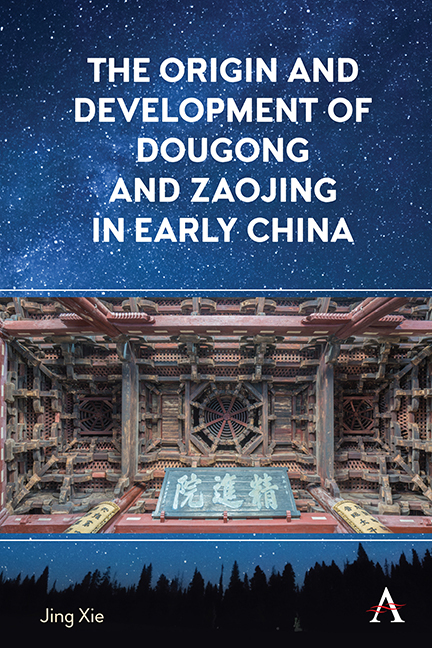3. - The Origin and Development of Zaojing
Published online by Cambridge University Press: 22 November 2023
Summary
Widely evident in the great halls from imperial China, and exhibiting superb craftsmanship, zaojing are taken for granted as symbols of prestige (see Figures 2–4). Some researchers affirm that zaojing were a product of Confucianism, as it helped to emphasize the unity of heaven and man on the one hand, and a hierarchical society on the other. Situated in a central position of a ceiling, zaojing may be a square, an octagon, or a circle, among a number of shapes. Equivalent to domes of heaven in the Western context, zaojing were believed to have a magic power protecting the architecture and inhabitants it enshrined. In particular, a zaojing was built within a structure to prevent the building from fire, an urban disaster that frequently took place in the past. Focusing on the archeological and literary sources from early China, this chapter inquiries about the origin of zaojing and attempts to articulate how zaojing evolved as an architectural means to assuage human fears, as well as to express human desires and longing.
Zaojing and Water Well
Both the physical form and the literary term jing 井 suggest that zaojing had an inherent connection with a water well. To further illustrate this linkage, a Neolithic water well in the Hemudu cultural relic site (modern Yuyao, Zhejiang Province) is selected as a case study (Figure 3.1). The plan of this well consists of an irregular circle on the periphery and a square in the center (Figure 3.2). Viewing the section, the circle is actually the surface of a basin that was full of water during the flooding season.
With a side length of two meters, the square is a shaft that sinks to the bottom of the basin, thereby forming a water well. During periods of drought, the well continued as a water source. Circular and semicircular wooden piles, whose diameters are about six centimeters, were densely erected against the four internal sides of the well. They were then reinforced by a square frame constructed by four horizontally laid round logs, each with a diameter of about 17 centimeters (see Figure 3.2). These four wooden logs were assembled with tenon and mortise joints. The wooden structure of the well, particularly its square frame on the upper edge, reflects the early pictograph character of jing (Figure 3.3).
- Type
- Chapter
- Information
- Publisher: Anthem PressPrint publication year: 2023

